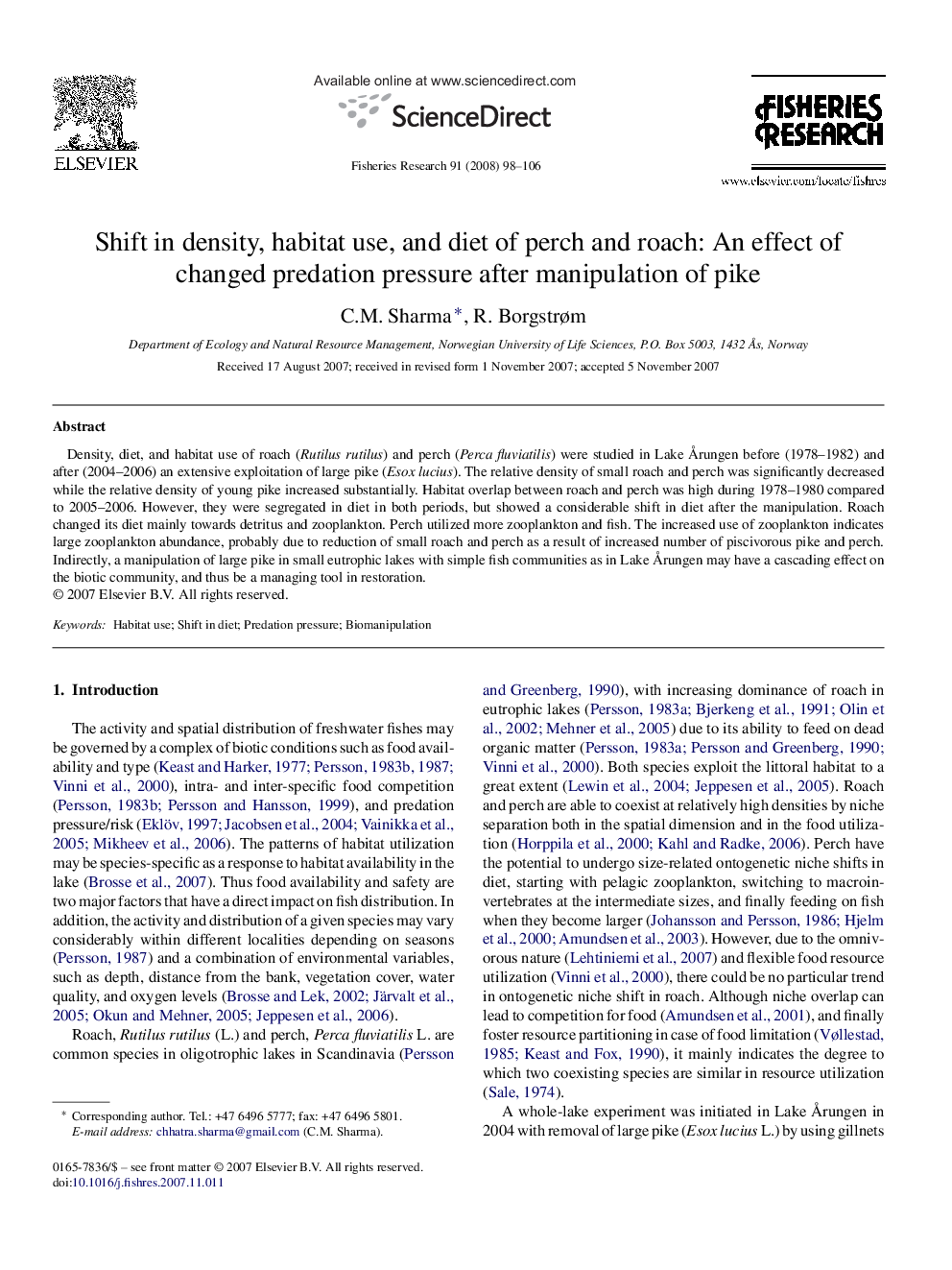| Article ID | Journal | Published Year | Pages | File Type |
|---|---|---|---|---|
| 4544415 | Fisheries Research | 2008 | 9 Pages |
Density, diet, and habitat use of roach (Rutilus rutilus) and perch (Perca fluviatilis) were studied in Lake Årungen before (1978–1982) and after (2004–2006) an extensive exploitation of large pike (Esox lucius). The relative density of small roach and perch was significantly decreased while the relative density of young pike increased substantially. Habitat overlap between roach and perch was high during 1978–1980 compared to 2005–2006. However, they were segregated in diet in both periods, but showed a considerable shift in diet after the manipulation. Roach changed its diet mainly towards detritus and zooplankton. Perch utilized more zooplankton and fish. The increased use of zooplankton indicates large zooplankton abundance, probably due to reduction of small roach and perch as a result of increased number of piscivorous pike and perch. Indirectly, a manipulation of large pike in small eutrophic lakes with simple fish communities as in Lake Årungen may have a cascading effect on the biotic community, and thus be a managing tool in restoration.
